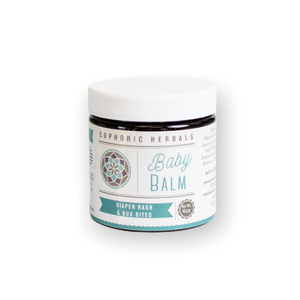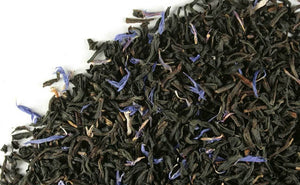For some moms and newborns, breastfeeding isn't always clear sailing. While some things, like having an overactive letdown, can be frustrating, there are many techniques and remedies that can rectify the situation.
If you haven't begun breastfeeding yet, then you also may be curious about what the letdown reflex is. The more you know about fast letdowns and how to deal with this condition, the more rewarding and successful your breastfeeding journey is likely to be.
What Is the Letdown Reflex?
Sometimes also called the milk ejection reflex, the letdown reflex occurs naturally to make breast milk available.
When your baby suckles at your breast, it stimulates a variety of minuscule nerve endings on your areola and nipple. This causes your brain to release a hormone called oxytocin. That hormone is what causes the muscles that surround the tissues in your breast that make milk to contract.
The contraction of these muscles causes the breast milk to flow toward your milk ducts and through the openings in the nipple.
Will You Know If the Letdown Reflex Is Occurring?
While some mothers actually feel the letdown reflex as it occurs, others do not. Both are completely natural.
If you do not feel the letdown reflex, this does not necessarily mean that it's not happening. If you don't feel it right away, you may notice it later when your baby's suckling changes from shallow, quick sucking early in the nursing session to a more rhythmical, deeper sucking.
Also, you may notice that milk is leaking from your other breast. This is completely normal and natural, as the letdown reflex occurs simultaneously in both breasts.
Mothers who do feel the letdown reflex describe symptoms such as:
- Sudden thirst
- Mild breast pain
- Breasts suddenly feel fuller
- Tingling sensations in the breasts
It is not unusual for mothers who feel the letdown reflex to experience a diminishment of these symptoms as the weeks progress.
How Do You Know If Your Letdown Reflex Is Overactive?

Sometimes, the mother's letdown reflex happens too quickly. This may be called a fast or overactive letdown. You may be experiencing this condition if you notice any of these signs in your baby:
- Disengaging from the breast early in the feeding with coughing or gagging
- Gulping sounds are common at the beginning of feedings
- Being unusually gassy and/or fussy
- Frequently spits up milk
- Makes clicking sounds at the early moments of a feeding
- Tugging at the nipple
- Squeaking or squealing while nursing
Does a Fast Letdown Mean an Oversupply of Breast Milk?
While overactive letdowns are frequently associated with moms who are producing too much milk, this is not always the case. Moms who are producing an appropriate amount of breast milk may also experience problems with fast letdowns.
What Kinds of Problems Does a Fast Letdown Cause?
Moms who have an overactive or forceful letdown may find that their baby tends to be colicky or gassy. Typically, this is a result of ingesting too much foremilk and not enough hindmilk.
Foremilk is thinner, more watery, and contains more lactose. It's ideal for providing a quick boost of energy and essential hydration. Creamier, fattier hindmilk is filled with nourishment, leading to feelings of contentment and satiety. Both are critical for proper growth and development.
However, babies who receive too much foremilk may suffer from excessive gas in the form of burping, hiccupping, and farting. They tend to be hungry more frequently and are more prone to colic. This is because foremilk is digested so quickly. Babies must feed more often to address these issues, which can make mom's breasts sore.
Dealing with Fast Letdown
Fortunately, moms with an overactive letdown have many remedies available. If one technique doesn't seem to work, then give another one a try. With numerous tools at your disposal, you'll soon find a way to cope with this relatively common issue.
Ensure Good Breast Attachment

A strong attachment to the nipple is critical for successful breastfeeding. You can help to ensure that everything goes smoothly by holding your baby close so that her chest is in contact with yours. Then, bring her nose directly opposite to your nipple. Allow her to tip her head back, which means that her top lip will brush across your nipple. This ensures that she opens her mouth sufficiently wide.
With your baby's mouth open wide, hug her close to your breast while trying to aim your nipple to the roof of her mouth.
Clamp Down on the Areola
You may choose to use your fingers to clamp the areola, effectively slowing the flow of your breast milk. Hold your baby to your breast with one hand. With the other, squeeze your areola tightly between two fingers. If you experience any hand soreness or cramping, be certain to take periodic breaks.
Try a Different Nursing Position
Nursing position can be everything when it comes to successful breastfeeding that's comfortable for mom and baby. Some of these positions even may help to tame an overactive letdown.
In a semi-reclined nursing position, you sit in a reclining chair with your baby on your chest and facing you. You alternatively may just lie back on some pillows or cushions. This position enables your baby's tongue to more easily cup the breast, and this frequently leads to your baby being able to control the flow of milk better.
Other moms may try the side-lying nursing position. Lie down on your side, and bring your baby close to you, facing the breast that is closest to the surface on which you are lying. Support him with one hand behind the neck and shoulder blades. In this position, your baby easily can detach from the breast when necessary and then reattach, allowing him more control over the flow.
Detach Baby at Letdown
This one works especially well for moms who actually feel the letdown reflex, but any mom who suspects that she has a forceful letdown can put this practice to good use. Have a breast milk bag or bottle or burp cloth on hand to use this technique.
At the beginning of a feeding session, remove your baby from the nipple when you feel the letdown reflex, which usually occurs between 30 seconds and a few minutes of beginning a nursing session. When you feel this happen, remove the baby from the breast and let the overactive letdown milk spill into the bag, bottle, or burp cloth. Then, simply reattach the baby to your breast.
Try Breastfeeding More Often
For some moms, this is the perfect strategy. More frequent breastfeeding means that there is a smaller amount of milk supply at each nursing session. The chances for an uncomfortably fast letdown are decreased, and that means a slower flow of milk. This can translate to a far more successful breastfeeding session for mom and baby.
Euphoric Herbals Is Here to Help
No matter what stage your family is in, Euphoric Herbals is ready to support you. When you are pregnant, breastfeeding, or chasing toddlers, you need to be at your best, and we carry complete lines of all-natural, organic products that help you to achieve this.
We understand that your children are your world, and that's why we have dedicated ourselves to providing a wide range of supplements and other supportive products that keep you and your family healthy, active, and engaged. Browse our offerings today to discover how Euphoric Herbals can support you.














































































































































































